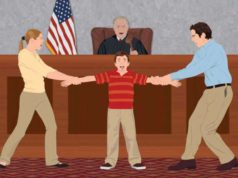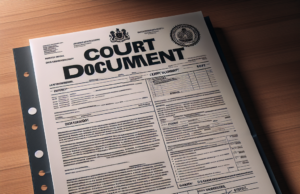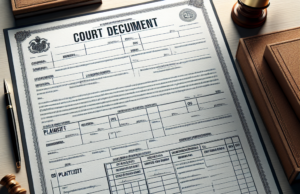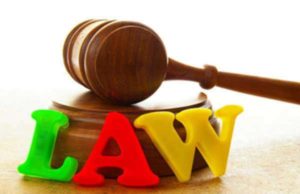
Divorce or separation can be a very difficult and challenging time in anyone’s life, particularly when it comes to matters related to child custody. Child custody laws determine who has legal and physical custody of a child, and what kind of visitation rights are granted to the other parent. In this article, we will explore the ins and outs of child custody laws.
Types of Child Custody
There are several types of child custody arrangements that can be established in a divorce or separation:
1. Sole Custody: One parent has complete legal and physical custody of the child, and the other parent has no say in the child’s upbringing.
2. Joint Custody: Both parents share legal and physical custody of the child, and responsibilities are divided equally.
3. Split Custody: One parent has custody of one child and another parent has custody of the other child.
Factors Considered in Determining Child Custody
When determining child custody arrangements, courts consider various factors, including:
1. The child’s age, health, and general welfare.
2. The emotional relationship between the child and each parent.
3. The mental and physical health of each parent.
4. The child’s preference, especially if they are mature enough to make a decision.
5. The financial and practical resources of each parent.
Visitation Rights
When one parent has sole physical custody, the other parent is typically granted visitation rights. The exact arrangement will depend on the child custody agreement, but visitation may occur every other weekend, for a few hours during the week, or on holidays.
Enforcing Child Custody Arrangements
If one parent fails to comply with a child custody agreement, the other parent can take legal action to enforce the agreement. This may include fines, jail time, or changes to the custody arrangement.
Modifying Child Custody Arrangements
Child custody arrangements can be changed if there is a significant change in the circumstances of either parent or the child, such as a move or a change in the child’s needs. A parent can petition the court for a modification of the agreement if they can show that it is in the best interest of the child.
Conclusion
Child custody is a complex matter that requires careful consideration of all parties involved. Understanding the ins and outs of child custody laws can help parents navigate the process and achieve a favorable outcome. By considering the factors involved in determining child custody, establishing visitation rights, enforcing custody arrangements, and modifying the agreement when necessary, parents can come to an arrangement that is in the best interest of the child.
In the United States, child custody laws will vary from state to state, as it is the state courts that have jurisdiction over issues revolving around divorce and subsequent child custody situations.
Therefore, it is important to check the state legislation in order to be aware of how child custody laws are enforced in a particular state.
However, it should be noted that there are child custody laws at the federal level The Uniform Child Custody, Jurisdiction and Enforcement Act is a federal law that was implemented to update a previews child custody law, The Uniform Child Custody Jurisdiction Act of 1968.
Only Massachusetts and Vermont are not signatories of the Act, though this particular child custody law deals with more issues of child custody that may span state lines and kidnapping.
Even though there are various child custody laws in the United States, here are some basic concepts that may be included in the various jurisdictions.
SOLE CUSTODY –
Child custody awarded by the courts to one parent because the other is considered to be unfit to care for the child as required by imposed state laws and pre-requisites.
Typically speaking, a parent is ruled as unfit to care for a child in the case that there is evidence or history of alcohol or controlled substance abuse, evidence of previous child neglect or abuse, or if the parent has a new partner that has proven to be unfit.
Sole custody will still allow the unfit parent visitation rights under certain provisions and circumstances decided by the courts.
PHYSICAL CUSTODY –
This kind of child custody is used to describe the parent who is legally allowed to have the child live with him/her.
Though the child may have visitation with the other parent, the parent with physical custody is the one that the child currently lives with.
JOINT PHYSICAL CUSTODY –
Child custody in which the child spends a significant amount of time living with both parents.
Joint physical custody is awarded in certain situations, such as both parents living in the same particular area or relatively close to each other.
This allows the child to attend the same school and maintain the same relationships with friends and family members.
Joint physical custody is often the preferred type of child custody when it is a viable option.
The separating couple will usually decide the parameters in terms of the living arrangements and time the child is supposed to spend with each.
However, if the parents cannot come to an arrangement, the courts may impose a decision they see as best for the parents and child.
LEGAL CUSTODY –
Child custody grants one parent the right to make all the decisions as to how the child is to be raised and as well as providing for the child’s overall well-being.
The parent with legal custody can make decisions in regards to the child’s education, healthcare, and religious faith, all without requiring the permission or authority of the other parent.
However, legal child custody is awarded in certain extreme circumstances.
JOINT LEGAL CUSTODY –
Probably the most common type of child custody, which allows for both parents to have input in the decisions in regards to the child’s upbringing.
This allows for both parents to have an active role in raising the child and possibly create the least amount of problems for the child in terms of mental and emotional suffering.
However, a violation of the provisions of joint legal custody can prompt a parent to bring the issue to the courts and request the removal of joint legal custody.





























